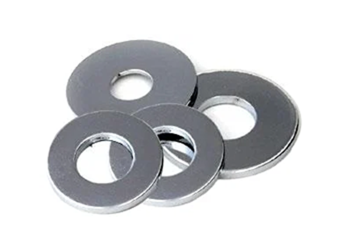Lis . 12, 2024 16:29 Back to list
what size threaded rod to use
Choosing the Right Size Threaded Rod A Comprehensive Guide
When it comes to construction, engineering, or any DIY projects, selecting the appropriate size of threaded rod is crucial for ensuring the strength and stability of the assembly. A threaded rod, also known as a stud or all-thread, is a long rod with threads running along its entire length, designed to withstand tension and provide anchor points for various applications. This article aims to guide you through the key considerations when choosing the right size threaded rod, covering topics including material, diameter, thread pitch, and length.
Understanding Threaded Rods
Threaded rods are available in various materials, including steel, stainless steel, aluminum, and plastic. Each material has its own properties in terms of strength, corrosion resistance, and load-bearing capacity. For instance, stainless steel rods are preferred in environments prone to corrosion, while carbon steel rods offer high tensile strength suitable for heavy-load applications.
1. Determining the Diameter
The diameter of the threaded rod is one of the most critical factors to consider. Diameter directly affects the load capacity of the rod; hence, understanding the maximum load it needs to support is vital. Common diameters range from 1/4 inch to 2 inches, but there are sizes available outside this range as well.
To determine the appropriate diameter, consider the following factors
- Load Requirements Calculate the total load that the threaded rod will need to bear. It is advisable to allow for a safety margin, typically by choosing a rod that can handle significantly more than the calculated load.
- Spacing Consider how far apart the rods will be placed. For applications requiring more structural integrity, thicker rods or additional rods may be necessary.
- Application Type Different applications may require different diameters. For example, intricate applications may work best with smaller diameter rods, while heavy machinery and structural components may necessitate larger diameters.
2. Selecting the Right Thread Pitch
Thread pitch refers to the distance from one thread crest to the next and is an important factor in the performance of a threaded rod. Coarse threads (with a larger pitch) provide better grip, making them suitable for applications experiencing vibrations. Fine threads offer better tensioning capabilities and are advantageous in applications requiring precise adjustments.
what size threaded rod to use

When determining the thread pitch, consider
- Load Application If the rod will be under constant load, finer threads might be more appropriate. For dynamic applications, coarse threads may be a better fit.
- Material Type Softer materials may benefit from finer threads to ensure a tighter fit without stripping.
3. Length Considerations
The length of the threaded rod depends on the specific application and installation requirements. While longer rods can accommodate more extensive assemblies, they can also introduce challenges related to stability and alignment.
Here are some tips for determining rod length
- Installation space Ensure the rod can fit within your intended application space, accounting for any fixtures or components that may also be present.
- Thread engagement A general guideline is to have at least 1.5 times the diameter of the rod engaged in the nut or threaded component. This ensures proper load distribution and reduces the risk of thread stripping.
4. Corrosion Resistance and Coating Options
Another factor to consider in the choice of threaded rod size is the environment in which it will be used. If the threaded rod will be exposed to moisture, chemicals, or other corrosive elements, selecting materials with inherent corrosion resistance, such as stainless steel, or applying coatings such as zinc plating or epoxy may be necessary.
Conclusion
Choosing the right size threaded rod is essential to the success of any project involving fastening and structural support. By considering factors such as diameter, thread pitch, length, and environmental conditions, you can make informed decisions that enhance the reliability and longevity of your assemblies. Always remember to account for safety margins and consult load charts or engineering guidelines when in doubt. Making the right choice will not only ensure that your project is safe and efficient but will also give you peace of mind that your structures can withstand the challenges they will face over time.
-
Threaded Rods in Art Where Structural Integrity Meets Aesthetic Vision
NewsApr.11,2025
-
Optimize Industrial Fastening with Precision-Crafted Hex Nut Solutions
NewsApr.11,2025
-
Master Fastening with Premium Stainless Steel Carriage Bolts
NewsApr.11,2025
-
Hex Sleeve Anchors: Smart Choice for Industrial-Grade Concrete Fastening
NewsApr.11,2025
-
Hex Head Timber Screws: Reinventing Safety in Modern Livestock Enclosures
NewsApr.11,2025
-
Elevate Efficiency with Robust Beam Clamps
NewsApr.11,2025


